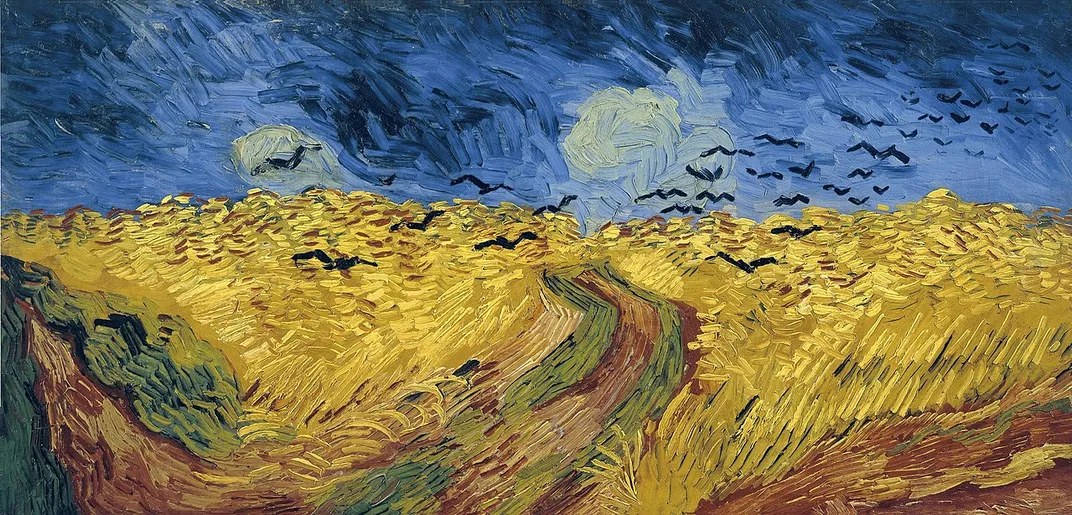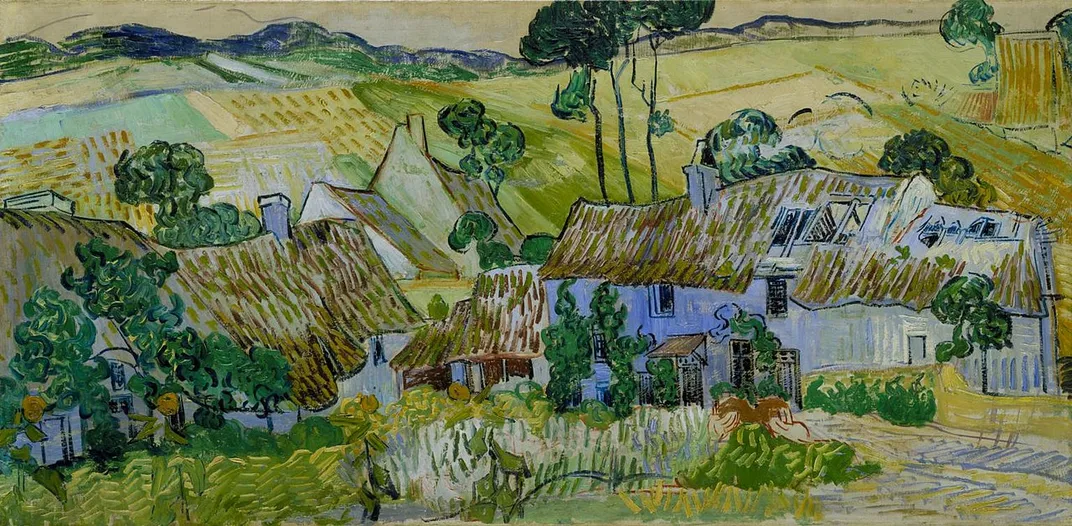Van Gogh Museum Suggests Artist’s Last Painting Has Long Been Misidentified
Experts argue that the abstract “Tree Roots” is a more likely candidate than the oft-cited “Wheatfield With Crows”
/https://tf-cmsv2-smithsonianmag-media.s3.amazonaws.com/filer/d8/6f/d86fb3a8-d43f-4ed5-8c47-dbee1374070c/vincent_van_gogh_-_tree_roots_and_trunks_f816.jpg)
It’s easy to see why many art lovers are quick to identify “Wheatfield With Crows” as Vincent van Gogh’s last painting: From the darkening storm clouds visible on the horizon to the staccato brushstrokes of the painting’s eponymous birds, the scene screams tragedy.
But a major piece of evidence—namely, a letter written by the Post-Impressionist that dates the work’s creation closer to July 10, 1890, a full two-and-a-half weeks before he committed suicide—contradicts this attribution. Instead, Zachary Small reports for Hyperallergic, researchers from Amsterdam’s Vincent van Gogh Museum now believe that a lesser-known canvas titled “Tree Roots” was actually the artist’s final work.
The shift in thinking isn’t an entirely new development. In 2012, art historians Bert Maes and Louis van Tilborgh made a convincing argument for the painting’s place in van Gogh’s oeuvre, pointing out that “Tree Roots” is one of only two unfinished works dating to the artist’s final days. As Small explains, van Gogh rarely left canvases incomplete.
A 2016 show staged at the Van Gogh Museum further reinforced the attribution, with the painting’s accompanying wall text explicitly identifying “Tree Roots” as van Gogh’s probable last work. Reviewing the show for the Guardian, Jonathan Jones wrote that curators were eager to dismiss “sensational interpretations” of “Wheatfield with Crows” as a manifestation of the artist’s inner strife. By emphasizing “Tree Roots” over the better-known work, Jones argues, the museum revealed how its “jagged strokes, expressive unreal colors … and empty areas of canvas are just as suggestive as those menacing crows.”

Hyperallergic’s Small details several additional arguments for “Tree Roots”’s true place in van Gogh’s oeuvre: Some researchers believe the artist’s style grew more disjointed toward the end of his life, embracing abstraction to an extent unseen in earlier works. Indeed, the subject of “Tree Roots” is decidedly harder to discern than that of “Wheatfield With Crows” or “Farms Near Auvers,” the only other unfinished work produced during van Gogh’s twilight months in the French village of Auvers-sur-Oise.
And though Theo van Gogh’s brother-in-law Andries Bonger identified “Farms Near Auvers” as van Gogh’s last work in an 1891 statement, he later highlighted an entirely different canvas, writing, “The morning before his death, [van Gogh] had painted a sous bois,” or forest scene, “full of sun and life.”
This description fits “Tree Roots,” which breaks from the ominous tone of “Wheatfield With Crows” to offer a palette filled with a sea of subdued blues, greens and browns. “The roots have been laid bare, torn from the earth and hanging perilously,” senior researcher Louis van Tilborgh (co-author of the 2012 article regarding “Tree Roots”) explains for a 2016 Van Gogh Museum video analyzing the painting.

In some ways, the painting appears to function as a goodbye. Intepreting the message of the work, Van Tilborgh suggests it's van Gogh's way of saying: “I have lived, just like those tree roots. I’ve done my best, I’ve struggled with life, I’ve grown, had setbacks and now is the time it ends. I am falling."
The artist's personal correspondence certainly follows Tilborgh's nature-based metaphor. As van Gogh wrote in a July 10,1890, missive to his brother Theo and wife Jo, “I usually try to be quite good-humoured, but my life, too, is attacked at the very root, my step also is faltering.”
Still, Van Gogh Museum curator Nienke Bakker cautions against ascribing too much intention to work.
“It’s clear he was trying to express his own emotional state of mind,” Bakker told the BBC’s Alastair Sooke in 2016. “Yet ‘Tree Roots’ is also very vigorous and full of life. It’s very adventurous. … For me, it’s hard to say that van Gogh painted it intentionally as a farewell—that would be too rational.”
/https://tf-cmsv2-smithsonianmag-media.s3.amazonaws.com/accounts/headshot/mellon.png)
/https://tf-cmsv2-smithsonianmag-media.s3.amazonaws.com/accounts/headshot/mellon.png)